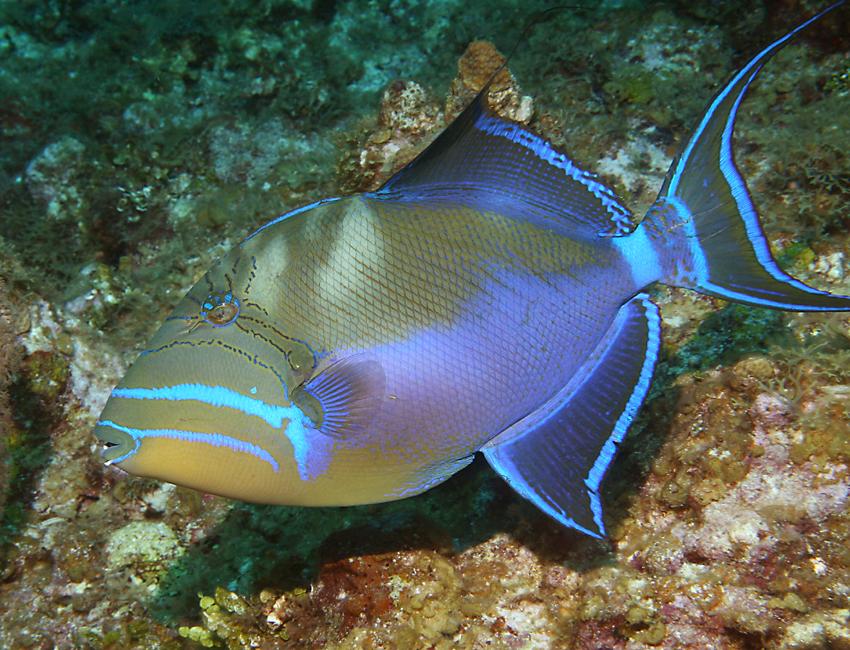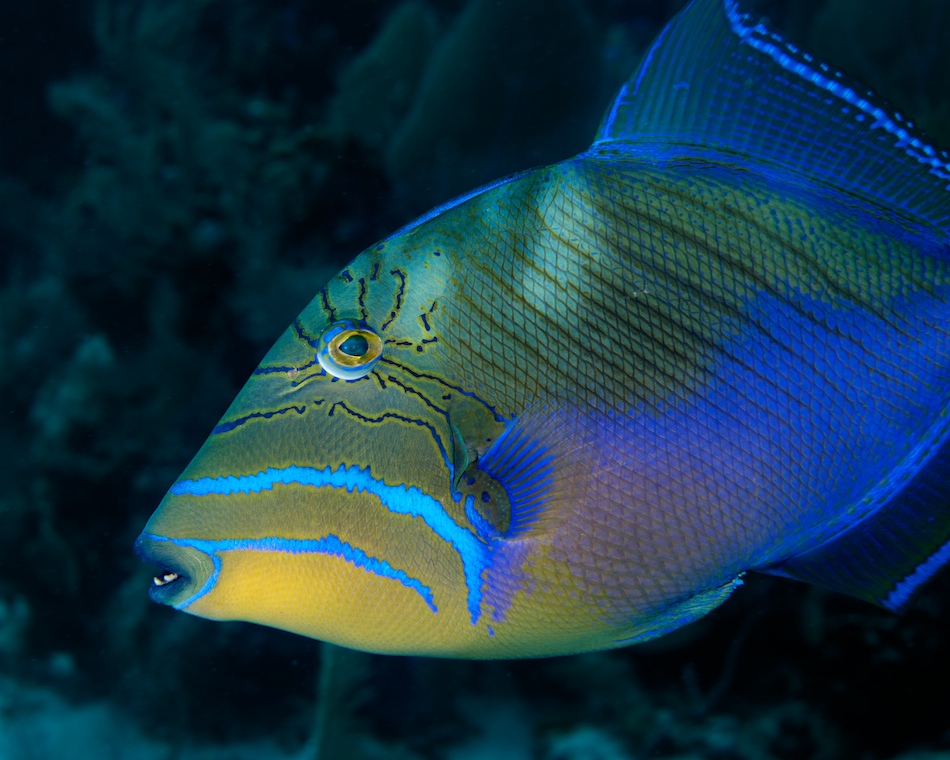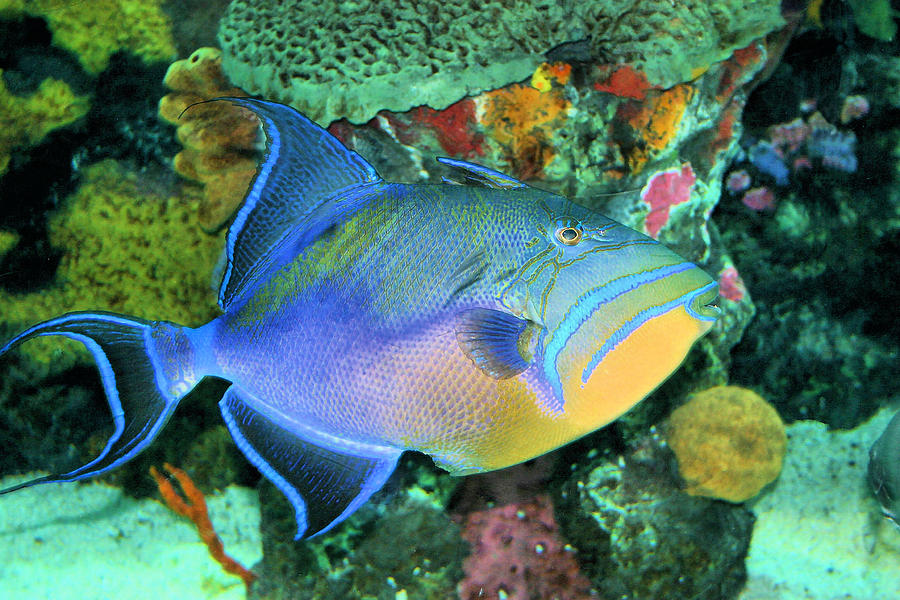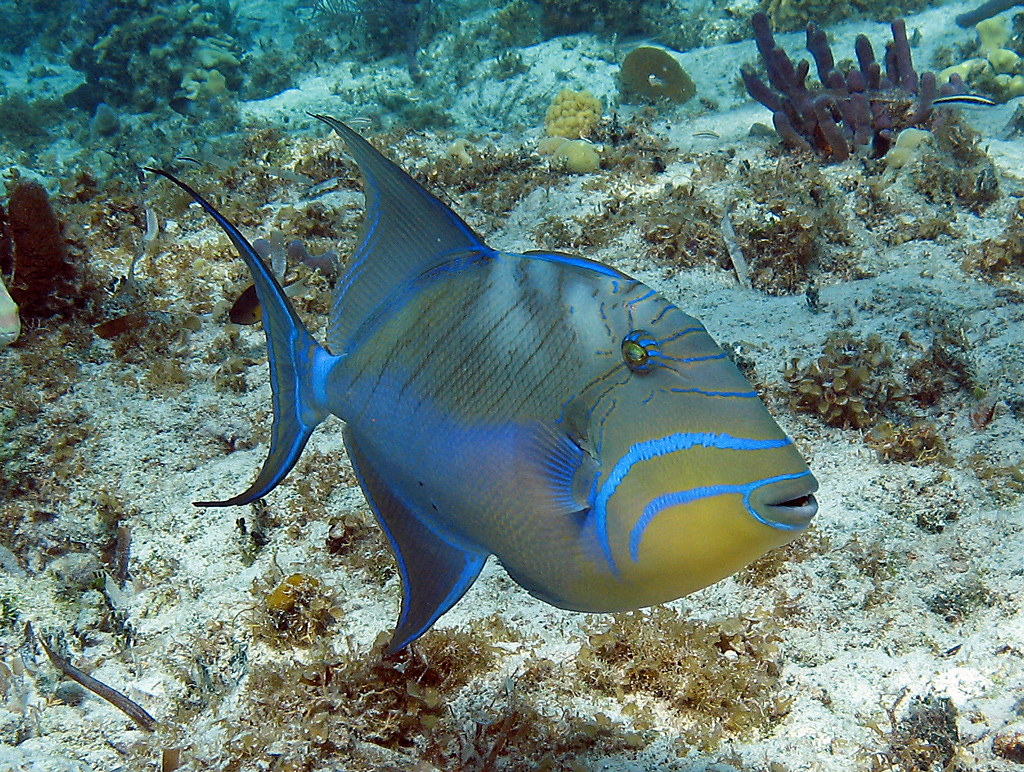Queen Triggerfish
Queen triggerfish ( Balistes Vetula)
The queen triggerfish ( Balistes vetula ) lives in the western Atlantic from Massachusetts over the Gulf of Mexico to the coast of southern Brazil, and in the eastern Atlantic from the Azores, Cape Verde and Angola to the south at Ascension. In Brehm's Animal Life of the fish was still called "Indian fish " ( vetula " old woman " - perhaps because they knew initially yes only geschrumpfe dry preparations ), with Hans Hass ( 1940) already queens horn fish ( the dorsal spine as a " horn " conceptualizing ); (Greek ) Balistes means " projectile ".
Features
Queen triggerfish are greenish or gray blue, yellow-orange, the underside of the head and trunk. Two bright blue bands contract from snout to the base of the pectoral fins, the lower goes into a blue ring around the lips over. About the caudal peduncle runs a broad band blue cross. The upper part of the flanks is patterned thin brownish diagonal bands. The caudal fin is sickle-shaped. The fish are 60 inches long.
Fins formula: Dorsal III/29-32, Anal 27-29
Way of life
Queen triggerfish live near the coast, over rocky and sandy bottoms, seagrass beds and coral reefs at depths of 5 to 50 meters. The fish live alone or in larger groups. They feed on bottom-dwelling invertebrates, including sea urchins, which are allowed to be blown over with a water jet or lifted so long and fall until they fall on their unprotected bottom and are then eaten by the short spiky bottom. In addition, mussels, snails, various crustaceans and bristle worms are eaten. Queen triggerfish spawn in shallow sand pits, the spawning is guarded by the male.










